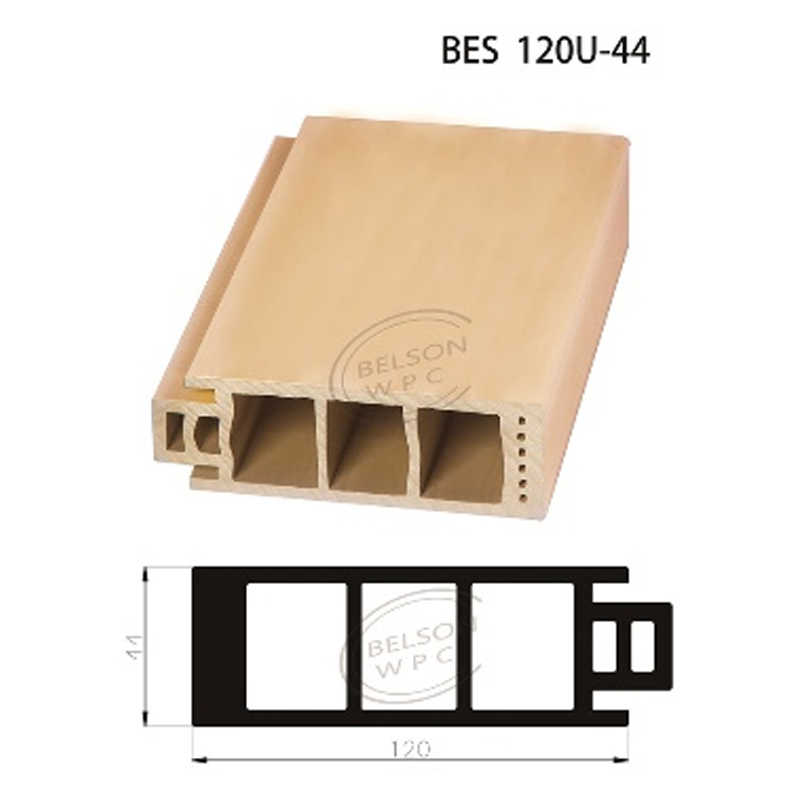INDUSTRY KNOWLEDGE
What are the primary components used in WPC assembly for door profiles?
The primary components used in WPC (Wood-Plastic Composite) assembly for door profiles typically include the following:
Wood Fiber or Flour: WPC door profiles are made by combining wood fibers or wood flour with plastic materials. The wood component provides natural aesthetics and helps enhance stiffness.
Thermoplastic Resin: Various thermoplastic resins such as polyethylene, polypropylene, or PVC (Polyvinyl Chloride) are used to bind the wood fibers together and provide structural integrity.
Additives: These can include various additives like stabilizers, colorants, UV inhibitors, and flame retardants to improve the overall performance, durability, and appearance of the WPC door profiles.
Processing Aids: These are used during the manufacturing process to facilitate the blending of the wood and plastic components, ensuring homogeneity and proper extrusion.
Coupling Agents: Coupling agents are added to enhance the interaction between the wood fibers and plastic matrix, improving the overall strength and stability of the composite material.
These components are carefully combined and processed through extrusion or injection molding techniques to create WPC door profiles, which can be customized for various applications in the construction and furniture industries.
How does the assembly process of WPC door profiles differ from other door materials?
The assembly process of WPC (Wood-Plastic Composite) door profiles differs from other door materials, such as solid wood, metal, or fiberglass, in several key ways:
Material Composition: WPC door profiles are made from a mixture of wood fibers or wood flour and thermoplastic resins, as well as various additives. In contrast, traditional door materials like solid wood doors are constructed from solid wood planks, while metal doors are typically made from steel or aluminum.
Extrusion or Injection Molding: WPC door profiles are often manufactured using extrusion or injection molding processes. These techniques involve shaping the material by pushing it through a mold or die. Traditional materials like solid wood doors are constructed through carpentry methods, involving cutting, shaping, and assembly, while metal doors are fabricated through welding or forming processes.
Customization: WPC door profiles offer a high degree of customization in terms of design, texture, and finish. They can mimic the appearance of wood or have unique patterns and textures. In contrast, traditional materials like wood or metal doors have limitations in design options and may require more labor-intensive customization.
Weight: WPC door profiles are generally lighter than solid wood doors and often easier to handle during installation. Metal doors, depending on the material, can be heavy, making transportation and installation more challenging.
Maintenance: WPC door profiles typically require less maintenance than solid wood doors, which may need periodic refinishing or sealing. Metal doors may require maintenance to prevent rust or corrosion, whereas WPC is less susceptible to these issues.
Durability: WPC door profiles are designed to be resistant to rot, decay, and insect infestation, which are common concerns with solid wood doors. Metal doors are highly durable and resistant to various environmental factors, making them suitable for specific applications.
Thermal Insulation: WPC door profiles may offer better thermal insulation properties compared to metal doors, but they may not match the natural insulation of solid wood doors.
Cost: The cost of WPC door profiles can vary but is often competitive with or lower than solid wood doors, depending on the quality and customization. Metal doors can also vary in price based on the material and features.
 more
more


 中文简体
中文简体 English
English عربى
عربى










